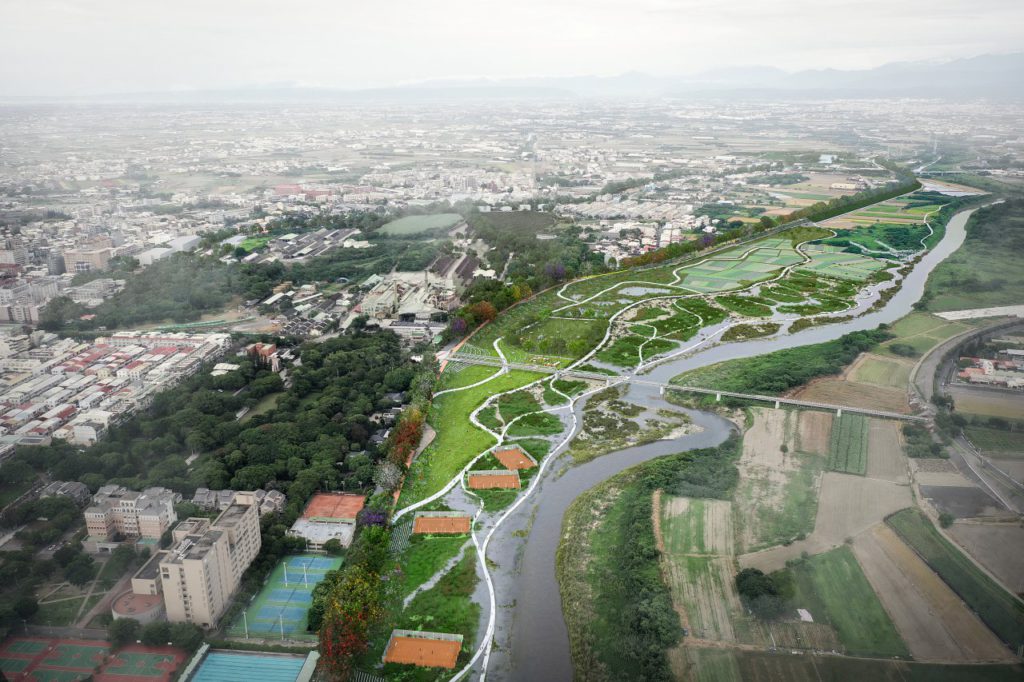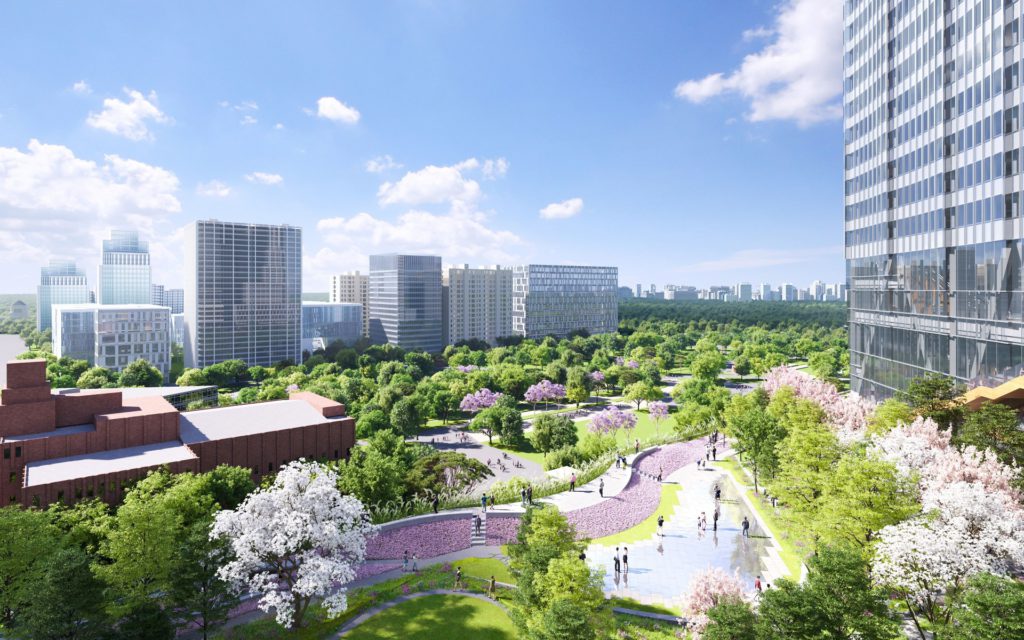
Huwei is an inland town of around 70,000 people, located on the Beigang River. The area developed in the early 19th century around its sugar factory. While the sugar factory still operates, a connected alcohol factory was closed in the 1970s, becoming overgrown with tropical vegetation. Today, the factory grounds, along with a dike built […]
Read More… from Hoowave Water Factory by MVRDV: Modernising a town’s entire water network

Located in the heart of Tokyo, the Uchisaiwaicho 1-Chome district is seen as a significant area of the city, one that provides key infrastructural services and is home to a hotel seen as the nation’s state guesthouse. Plans for its development have been underway since 2011 when the Tokyo Metropolitan Government, Chiyoda City and the […]
Read More… from A ‘citizen co-creation’ model for Uchisaiwaicho 1-Chome District Development

In line with our ongoing student competition FuturArc Prize (FAP) 2022: Reinterpretation, we are highlighting projects that follow the theme. Click here to learn more about the FAP brief; submit your entries by 25 February 2022! At the time of the plan’s development, Beijing developers were razing and rebuilding much of the city. Rather than […]
Read More… from 798 Vision Plan: transforming historic factories into an art district

In 2016, the legally binding international treaty on climate change—the Paris Agreement—entered into force. Its urgent goal is to limit global warming to 1.5 degrees Celsius compared to pre-industrial levels. To achieve this by the year 2050, countries and cities have made commitments to reach net zero carbon—which means not adding new emissions and absorbing […]
Read More… from Porte de Montreuil: Retrofitting the first zero-carbon neighbourhood in Paris

At 13.5 kilometres long, the bold Banzhang Mountain Connector in Zhuhai will link the mountain within the city to the sea. Located right in the middle of the city, Banzhang Mountain has been viewed as a hindrance as it prevents the development of roads, thus limiting people’s access around the city. The design team, however, […]
Read More… from Zhuhai Xiangzhou Green Connector: Jing Shan Trail

Västerås Travel Centre is a new infrastructural hub in the heart of one of Sweden’s largest cities. Behaving like a dynamic urban node and visual landmark, the travel centre will connect the neighbourhoods of Västerås and the city’s flows and create a new public destination in the city centre.The final design has now been revealed to the public and construction is slated to begin in 2022 and is expected to be finalised in 2025. […]
Read More… from Västerås Travel Centre

According to a United Nations report published in 2017, nearly 5 billion people are expected to live in cities by 2030. Governments are faced with substantial challenges related to housing solutions. Seeking to provide affordable housing, TECLA is a new circular housing model that is created using entirely reusable, recyclable materials taken from the local […]
Read More… from Prototype 3D-printed global habitat for sustainable living

This project design won the first prize in an international competition for the Thu Thiem Central Plaza and Riverside Park, organised by ICA and Sazaki in 2008. The central plaza and river park is a multifunctional realm, a poetic signature of the natural geography. The design is not merely a plan drawn on the surface—it […]
Read More… from Thu Thiem Central Plaza and Riverside Park

The new 21,000 square metres Khatib Clubhouse comes sustainably designed with many first-of-its-kind facilities and amenities. It had its ground-breaking ceremony on 12 July 2018 and is purpose-built with the needs of the Home Team National Servicemen (NSmen) in mind. The 21,000-square-metre five-storey clubhouse is located within walking distance of Khatib MRT station. SHAPING AN […]
Read More… from Khatib Clubhouse

URBAN Windsor Nature Park (WNP) is a 75-hectare green space situated at the intersection between the dense urban fabric of Singapore and its natural biodiversity core. Located at the fringe of the Central Catchment Nature Reserve (CCNR), WNP is designed as a ‘buffer park’ that mitigates the impact of present and forecasted increase in human […]
Read More… from FGLA 2019 Winner: Development of Windsor Nature Park

The new state capital of a Southern Indian state is heralded as the most sustainable city in the world. After Jawaharlal invited the Swiss-French architect Le Corbusier to build Chandigarh in the 1950s, Amaravati is the second ‘built city’ of a massive scale to come up in India. Though five decades have passed since the […]
Read More… from Amaravati

At the time of the plan’s development, Beijing developers were razing and rebuilding much of the city. Rather than tear down the industrial infrastructure and historic buildings influenced by Russian and German presence in the area over the years, Sasaki proposed preserving as much of the existing infrastructure as possible to capture the spirit, history […]
Read More… from 798 Arts district vision plan



